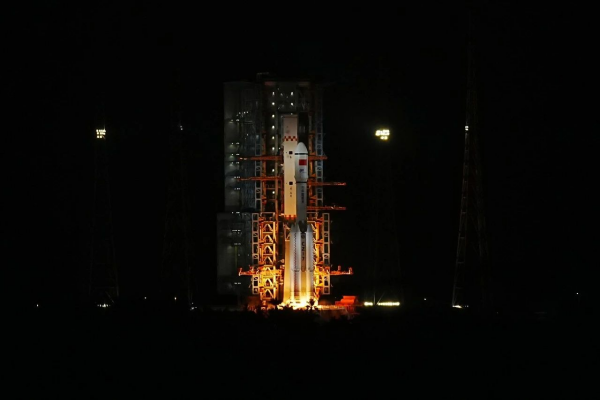On July 15, the Tianzhou-9 cargo spacecraft was successfully launched into orbit by a Long March-7 carrier rocket from the Wenchang Spacecraft Launch Site in China’s Hainan Province.

A Long March-7 rocket carrying cargo spacecraft Tianzhou-9 blasts off from the Wenchang Spacecraft Launch Site in China’s Hainan Province on July 15, 2025. [Photo/sasac.gov.cn]
As per the mission plan, Tianzhou-9 docked at the rear docking port of Tianhe, the core module of China’s space station Tiangong about three hours after launch and transited into the combined flight phase. Later, crew members from the Shenzhou-20 mission onboard the space station will conduct the planned transfer of the payloads from the cargo spacecraft.
The Tianzhou cargo spacecrafts, developed by the Fifth Academy of China Aerospace Science and Technology Corporation (CASC), stand as the world’s most capable active cargo spacecraft in terms of transport capacity and in-orbit support. Tasked with delivering essential supplies to crews of the Shenzhou-20 and Shenzhou-21 missions, Tianzhou-9 plays a crucial role in supporting the operations of China’s space endeavors.
The spacecraft is loaded with essential supplies, totaling approximately 6.5 tons, including consumables for the orbiting crew, space station platform materials, and experimental equipment and samples for space applications, aerospace medicine, and technology demonstrations. Among the highlights of this mission are two new sets of independently developed extravehicular spacesuits and a core muscle training device designed to help astronauts counteract the effects of microgravity.
Notably, Tianzhou-9 is also transporting a large biological cultivation device weighing nearly 200 kilograms — setting a new record for the size and weight of a single item carried by a cargo spacecraft. This mission also expands the variety of space food options, adding nearly 30 new dishes and bringing the total number of food items available to astronauts to over 190.
To ensure the long-term, stable operation of the space station, the Tianzhou program has for the first time established an emergency support mechanism. While Tianzhou-9 carries out its mission, a backup spacecraft, Tianzhou-10, remains on standby in Beijing.
The Long March-7 rocket, developed by the First Academy of CASC, is China’s new-generation medium-lift launch vehicle designed specifically for cargo missions to the space station. It is highly reliable, safe, and environmentally friendly, with a payload capacity of up to 14 tons to low Earth orbit. Since its maiden flight in 2016, the Long March-7 has successfully completed nine Tianzhou cargo spacecraft launch missions.
This launch marked the 584th flight of the Long March carrier rocket series.
(Executive editor: Cui Feng)